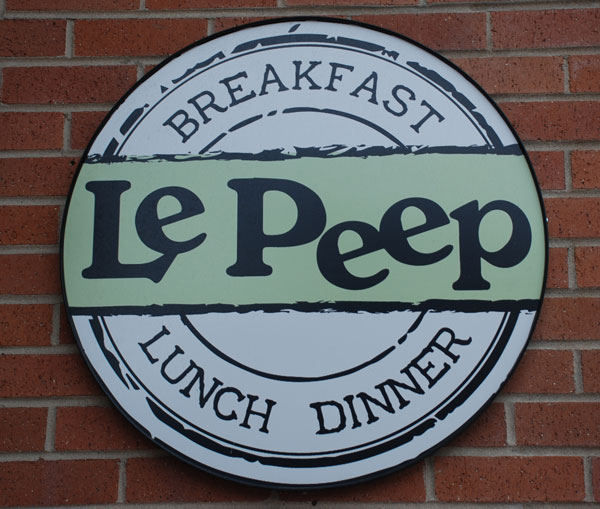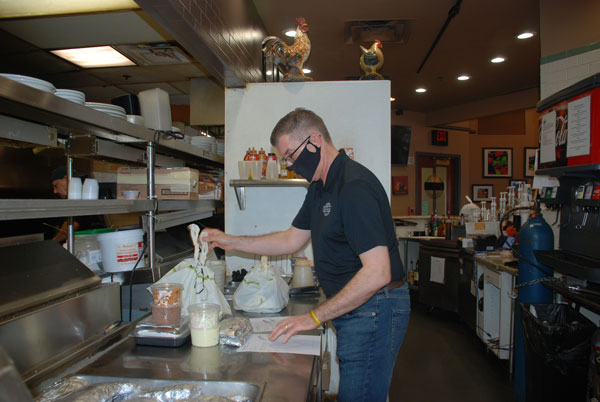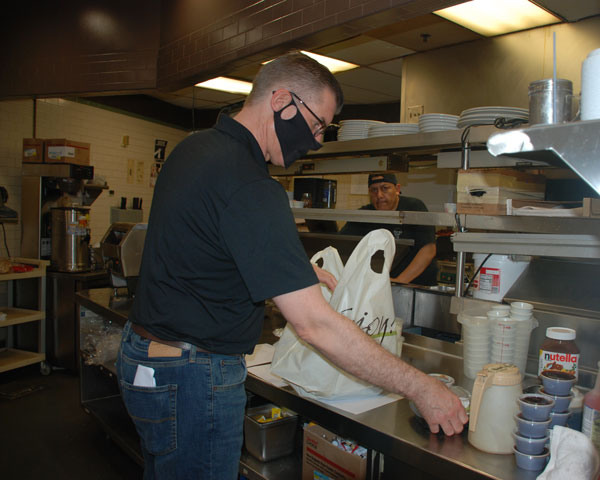
Michael Martin, owner of the Mount Prospect LePeep Café (847-797-9990) since 2005, suffered during the COVID-19 pandemic, just like his fellow restaurateurs. With limited dining restrictions in effect, he had to turn to increased carry-out, curbside pick-up and deliveries for his restaurant at the corner of Northwest Highway and Route 83. It wasn’t easy, but limited openings during the summer and early fall gave him hope.
When the state shut down again in November, however, he knew he had to do something differently if he wanted his business to survive during the winter months. He had seen other restaurants pivoting to pizza kits and so forth to stay afloat, so he came up with his own unique service.
“I wish I would have thought of this early on because it might have helped me keep some people employed,” Martin said.

It occurred to Martin that after working hard all day, people probably didn’t want to go home and cook dinner. “This Pandemic has made a lot of people tired of coming up with ideas for dinner menus, going to the market, then prepping and cooking,” he explained.
So, Martin created “Meals, Made, Easy.” He planned the menu, then shopped for the food, prepped and cooked it. By Wednesday, every week through early April, he posted a new menu on Facebook with four different meal plans. The meals were created for two, four or six people, depending on the size of the family or the appetites. Orders were then taken through 2 p.m., Saturday and the prepared food was available for pick-up between 3 and 7 p.m. on Mondays.
All customers had to do was order, re-heat, and eat. Customers could order for one night or up to all four meal plans and take care of dinners for the whole week.
“We have been doing this for 18 weeks and have offered roughly three to four different menus per week. We have rerun our popular items a few times, but have tried to offer new items every week,” Martin explained.
“We ended up with between 15 and 20 regular customers, ordering between one and four meals a week,” he continued. “People could purchase one meal plan or all of them. We also offered ala carte items, salads, cold soups, egg salad, chicken salad, salsa, salad dressings, pancakes, cinnamon rolls, etc. The lasagna, meatloaf, sloppy joes, pot roast, tilapia, and all the Mexican items – tacos, enchiladas – were particularly popular.”
“In the beginning we tried to build it all around family meals based on four people. But we got a lot of people asking about meals for two, so we tiered it for two, four or six people. Meals for two was our most popular portion,” Martin stated.

“The Monday after Easter was our last pick-up day for a while. We have pivoted a lot with this concept, offering catering, frozen meals, ala carte items, and our regular meal plans,” he continued. “It’s a lot of work and currently society is trying to get back to some sense of normal. We want guests to get out and support their local restaurants. This idea was never to take the place of dining out. The idea was all about saving people time, money and effort in their weekly planning of meals. We will continue to work on the MME brand and again offer it to our guests in the future when we can. It may return as a weekly feature down the road. We may also continue to offer limited quantities of refrigerated and frozen meals to be picked up anytime during our normal business hours.”
“There is a lot of extra work required in the planning and production of the MME program and it has become even more challenging since we re-opened indoor dining. Also, from an ordering standpoint we have had to purchase some things that aren’t on our regular menu and if we don’t sell them, we need to do something else with them,” Martin added.

